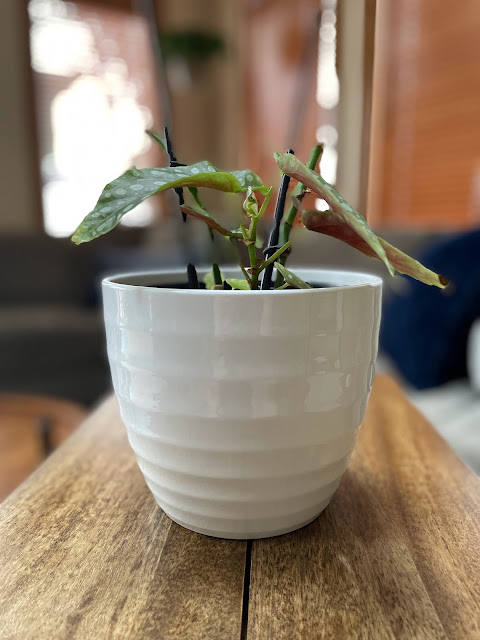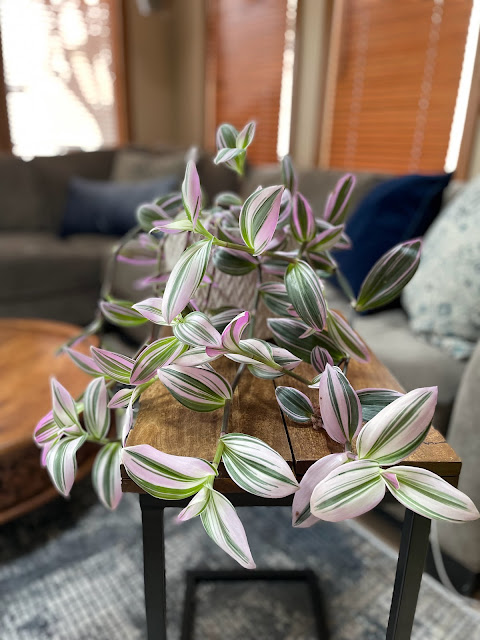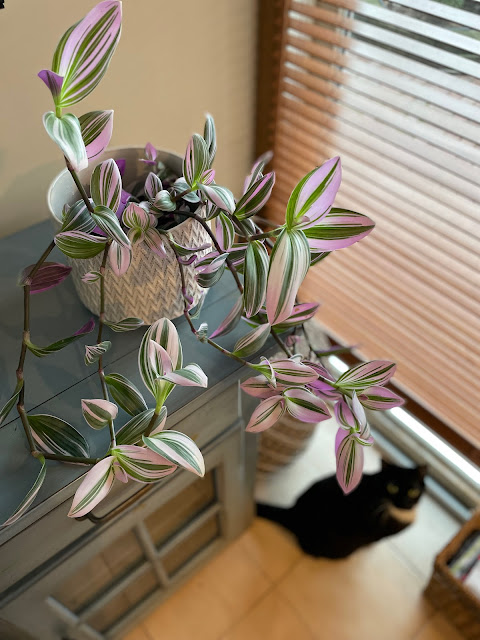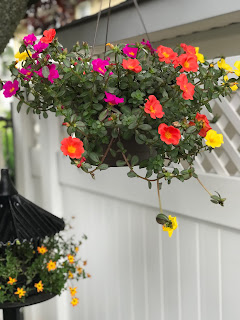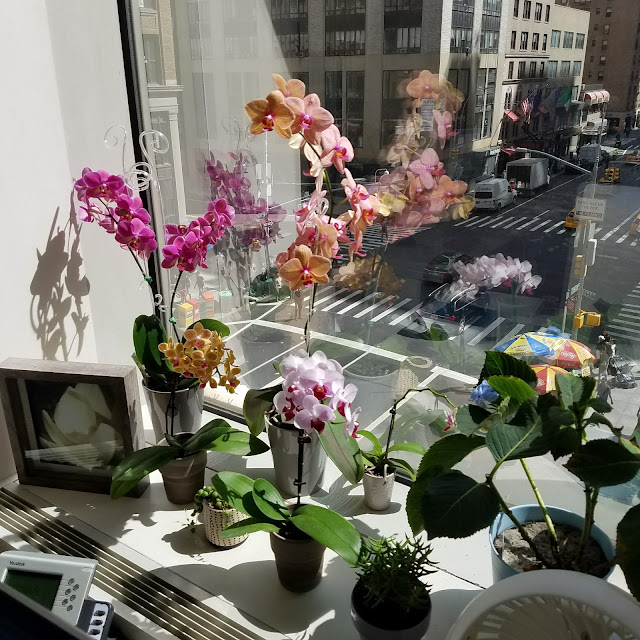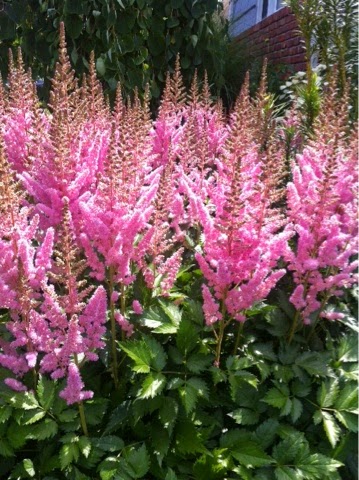Birkin Philodendron
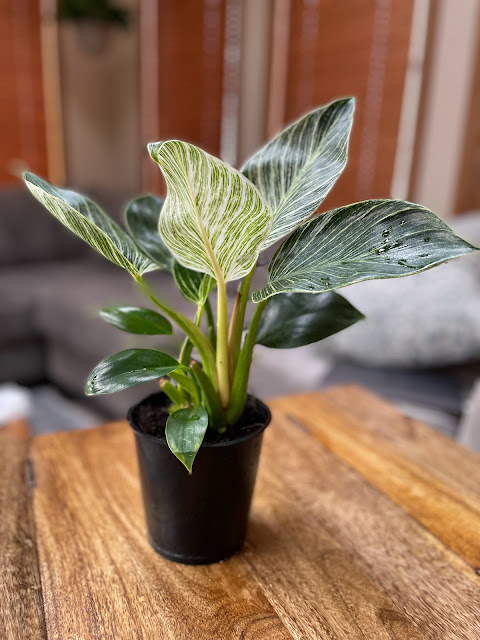
Photo by Frank Giugliano The Birkin Philodendron is a trendy, relatively new variety of the very popular Philodendron family that you will not find out in the wild (not naturally at least.) It is distinguished by its variegated leaves that are especially noticeable on new growth, marked by linear white lines throughout its dark green, waxy oval and heart-shaped leaves. The Birkin Philodendron grows up to 3 feet in height and width and prefers non-direct, bright light and gently, moist soil, which should be allowed to dry out between waterings. While philodendrons are amongst the most easily acquired houseplant, the Birkin Philodendron is a bit more elusive (whether by design or natural availability I have no idea.) Birkin Philodendron Care Temperatures between 65º and 75º F ahrenheit Bright, indirect light Keep soil slightly moist. Water thoroughly until top 2" of soil becomes dry Use a loose, water retaining potting soil. Add peat for moisture ...

